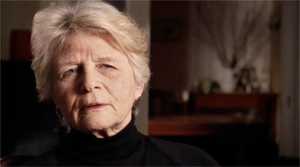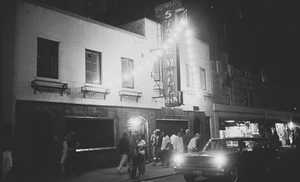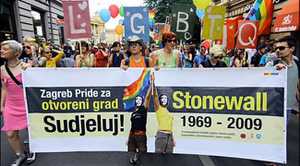Milestones in the American Gay Rights Movement
From the Collection: The LGBTQ+ experience
December 10, 1924
The Society for Human Rights is founded by Henry Gerber in Chicago. The society is the first gay rights organization as well as the oldest documented in America. After receiving a charter from the state of Illinois, the society publishes the first American publication for homosexuals, Friendship and Freedom. Soon after its founding, the society disbands due to political pressure.
1948
Biologist and sex researcher Alfred Kinsey publishes Sexual Behavior in the Human Male. From his research Kinsey concludes that homosexual behavior is not restricted to people who identify themselves as homosexual and that 37% of men have enjoyed homosexual activities at least once. While psychologists and psychiatrists in the 1940s consider homosexuality a form of illness, the findings surprise many conservative notions about sexuality.
November 11, 1950
In Los Angeles, gay rights activist Harry Hay founds America’s first sustained national gay rights organization. In an attempt to change public perception of homosexuality, the Mattachine Society aims to "eliminate discrimination, derision, prejudice and bigotry," to assimilate homosexuals into mainstream society, and to cultivate the notion of an "ethical homosexual culture."
December 15, 1950
A Senate report titled "Employment of Homosexuals and Other Sex Perverts in Government" is distributed to members of Congress after the federal government had covertly investigated employees' sexual orientation at the beginning of the Cold War. The report states since homosexuality is a mental illness, homosexuals "constitute security risks" to the nation because "those who engage in overt acts of perversion lack the emotional stability of normal persons."
Over the previous few years, more than 4,380 gay men and women had been discharged from the military and around 500 fired from their jobs with the government. The purging will become known as the "lavender scare."
April, 1952
The American Psychiatric Association lists homosexuality as a sociopathic personality disturbance in its first publication of the Diagnostic and Statistical Manual of Mental Disorders. Immediately following the manual's release, many professionals in medicine, mental health and social sciences criticize the categorization due to lack of empirical and scientific data.
April 27, 1953
President Dwight Eisenhower signs Executive Order 10450, banning homosexuals from working for the federal government or any of its private contractors. The Order lists homosexuals as security risks, along with alcoholics and neurotics.
September 21, 1955
In San Francisco, the Daughters of Bilitis becomes the first lesbian rights organization in the United States. The organization hosts social functions, providing alternatives to lesbian bars and clubs, which are frequently raided by police.
August 30, 1956
American psychologist Evelyn Hooker shares her paper "The Adjustment of the Male Overt Homosexual" at the American Psychological Association Convention in Chicago. After administering psychological tests, such as the Rorschach, to groups of homosexual and heterosexual males, Hooker's research concludes homosexuality is not a clinical entity and that heterosexuals and homosexuals do not differ significantly. Hooker's experiment becomes very influential, changing clinical perceptions of homosexuality.
January 13, 1958
In the landmark case One, Inc. v. Olesen, the United States Supreme Court rules in favor of the First Amendment rights of the lesbian, gay, bisexual and transgender (LGBT) magazine "One: The Homosexual Magazine." The suit was filed after the U.S. Postal Service and FBI declared the magazine obscene material, and it marks the first time the United States Supreme Court rules in favor of homosexuals.
January 1, 1962
Illinois repeals its sodomy laws, becoming the first U.S. state to decriminalize homosexuality.
July 4, 1965
At Independence Hall in Philadelphia, picketers begin staging the first Reminder Day to call public attention to the lack of civil rights for LGBT people. The gatherings will continue annually for five years.
April 21, 1966
Members of the Mattachine Society stage a "sip-in" at the Julius Bar in Greenwich Village, where the New York Liquor Authority prohibits serving gay patrons in bars on the basis that homosexuals are "disorderly." Society president Dick Leitsch and other members announce their homosexuality and are immediately refused service.
Following the sip-in, the Mattachine Society will sue the New York Liquor Authority. Although no laws are overturned, the New York City Commission on Human Rights declares that homosexuals have the right to be served.
August, 1966
After transgender customers become raucous in a 24-hour San Francisco cafeteria, management calls police. When a police officer manhandles one of the patrons, she throws coffee in his face and a riot ensues, eventually spilling out onto the street, destroying police and public property.
Following the riot, activists established the National Transsexual Counseling Unit, the first peer-run support and advocacy organization in the world.
June 28, 1969
Patrons of the Stonewall Inn in Greenwich Village riot when police officers attempt to raid the popular gay bar around 1am. Since its establishment in 1967, the bar had been frequently raided by police officers trying to clean up the neighborhood of "sexual deviants."
Angry gay youth clash with aggressive police officers in the streets, leading to a three-day riot during which thousands of protestors receive only minimal local news coverage. Nonetheless, the event will be credited with reigniting the fire behind America's modern LGBT rights movement.
June 28, 1970
Christopher St. Liberation Day commemorates the one-year anniversary of the Stonewall riots. Following the event, thousands of members of the LGBT community march through New York into Central Park, in what will be considered America's first gay pride parade.
In the coming decades, the annual gay pride parade will spread to dozens of countries around the world.
December 15, 1973
The board of the American Psychiatric Association votes to remove homosexuality from its list of mental illnesses.
January, 1974
Kathy Kozachenko becomes the first openly gay American elected to public office when she wins a seat on the Ann Arbor, Michigan City Council.
June 7, 1977
Singer and conservative Southern Baptist Anita Bryant leads a successful campaign with the "Save Our Children" Crusade to repeal a gay rights ordinance in Dade County, Florida. Bryant faces severe backlash from gay rights supporters across the U.S. The gay rights ordinance will not be reinstated in Dade County until December 1, 1998, more than 20 years later.
November 8, 1977
Harvey Milk wins a seat on the San Francisco Board of Supervisors and is responsible for introducing a gay rights ordinance protecting gays and lesbians from being fired from their jobs. Milk also leads a successful campaign against Proposition 6, an initiative forbidding homosexual teachers.
A year later, on November 27, 1978, former city supervisor Dan White assassinates Milk. White's actions are motivated by jealousy and depression, rather than homophobia.
May 21, 1979
Dan White is convicted of voluntary manslaughter and is sentenced to seven years in prison. Outraged by what they believed to be a lenient sentence, more than 5,000 protesters ransack San Francisco's City Hall, doing hundreds of thousands of dollars worth of property damage in the surrounding area.
The following night, approximately 10,000 people gather on San Francisco's Castro and Market streets for a peaceful demonstration to commemorate what would have been Milk's 49th birthday.
October 14, 1979
An estimated 75,000 people participate in the National March on Washington for Lesbian and Gay Rights. LGBT people and straight allies demand equal civil rights and urge for the passage of protective civil rights legislature.
July 8, 1980
The Democratic Rules Committee states that it will not discriminate against homosexuals. At their National Convention on August 11-14, the Democrats become the first major political party to endorse a homosexual rights platform.
July 3, 1981
The New York Times prints the first story of a rare pneumonia and skin cancer found in 41 gay men in New York and California. The CDC initially refers to the disease as GRID, Gay Related Immune Deficiency Disorder.
When the symptoms are found outside the gay community, Bruce Voeller, biologist and founder of the National Gay Task Force, successfully lobbies to change the name of the disease to AIDS.
March 2, 1982
Wisconsin becomes the first U.S. state to outlaw discrimination on the basis of sexual orientation.
March 10, 1987
AIDS advocacy group ACT UP (The AIDS Coalition to Unleash Power) is formed in response to the devastating affects the disease has had on the gay and lesbian community in New York. The group holds demonstrations against pharmaceutical companies profiteering from AIDS-related drugs as well as the lack of AIDS policies protecting patients from outrageous prescription prices.
October 11, 1987
Hundreds of thousands of activists take part in the National March on Washington to demand that President Ronald Reagan address the AIDS crisis.
Although AIDS had been reported first in 1981, it is not until the end of his presidency that Reagan speaks publicly about the epidemic.
May - June, 1988
The CDC mails a brochure, Understanding AIDS, to every household in the U.S. Approximately 107 million brochures are mailed.
December 1, 1988
The World Health Organization organizes the first World AIDS Day to raise awareness of the spreading pandemic.
August 18, 1990
President george Bush signs the Ryan White Care Act, a federally funded program for people living with AIDS. Ryan White, an Indiana teenager, contracted AIDS in 1984 through a tainted hemophilia treatment. After being barred from attending school because of his HIV-positive status, Ryan White becomes a well-known activist for AIDS research and anti-discrimination.
1991
Created by the New York-based Visual AIDS, the red ribbon is adopted as a symbol of awareness and compassion for those living with HIV/AIDS.
December 21, 1993
The Department of Defense issues a directive prohibiting the U.S. Military from barring applicants from service based on their sexual orientation. "Applicants... shall not be asked or required to reveal whether they are homosexual, " states the new policy, which still forbids applicants from engaging in homosexual acts or making a statement that he or she is homosexual. This policy is known as "Don't Ask, Don't Tell."
May 20, 1996
In the case of Romer v. Evans, the United States Supreme Court decides that Colorado's 2nd amendment, denying gays and lesbians protections against discrimination, is unconstitutional, calling them "special rights."
September 21, 1996
President Clinton signs the Defense of Marriage Act into law. The law defines marriage as a legal union between one man and one woman and that no state is required to recognize a same-sex marriage from out of state.
April 1, 1998
Coretta Scott King, widow of civil rights leader Martin Luther King, Jr., calls on the civil rights community to join the struggle against homophobia. She receives criticism from members of the black civil rights movement for comparing civil rights to gay rights.
April 26, 2000
Vermont becomes the first state in the U.S. to legalize civil unions and registered partnerships between same-sex couples.
June 26, 2003
In Lawrence v. Texas the U.S. Supreme Court rules that sodomy laws in the U.S. are unconstitutional.
May 18, 2004
Massachusetts becomes the first state to legalize gay marriage. The court finds the prohibition of gay marriage unconstitutional because it denies dignity and equality of all individuals.
In the following six years, New Hampshire, Vermont, Connecticut, Iowa and Washington D.C. will follow suit.
August 9, 2007
Sponsored by the Human Rights Campaign, the Logo cable channel hosts the first American presidential forum focusing specifically on LGBT issues, inviting each presidential candidate. Six Democrats participate in the forum, including Hillary Clinton and Barack Obama, while all Republican candidates decline.
November 4, 2008
California voters approve Proposition 8, making same-sex marriage in California illegal. The passing of the ballot garners national attention from gay-rights supporters across the U.S. Prop 8 inspires the NOH8 campaign, a photo project that uses celebrities to promote marriage equality.
June 17, 2009
President Obama signs a Presidential Memorandum allowing same-sex partners of federal employees to receive certain benefits. The memorandum does not cover full health coverage.
October 28, 2009
The Matthew Shepard Act is passed by Congress and signed into law by President Obama on October 28th. The measure expands the 1969 U.S. Federal Hate Crime Law to include crimes motivated by a victim's actual or perceived gender, sexual orientation, gender identity or disability.
Matthew Shepard was tortured and murdered near Laramie, Wyoming on October 7, 1998 because of his sexual orientation.
August 4, 2010
A federal judge in San Francisco decides that gays and lesbians have the constitutional right to marry and that Prop 8 is unconstitutional. Lawyers will challenge the finding.
December 18, 2010
The U.S. Senate votes 65-31 to repeal "Don't Ask, Don't Tell" policy, allowing gays and lesbians to serve openly in the U.S. Military.
February 23, 2011
President Obama states his administration will no longer defend the Defense of Marriage Act, which bans the recognition of same-sex marriage.
June 24, 2011
New York State passes the Marriage Equity Act, becoming the largest state thus far to legalize gay marriage.
June 26, 2015
With a 5-4 decision in Obergefell v. Hodges, the U.S. Supreme Court declares same-sex marriage legal in all 50 states.







